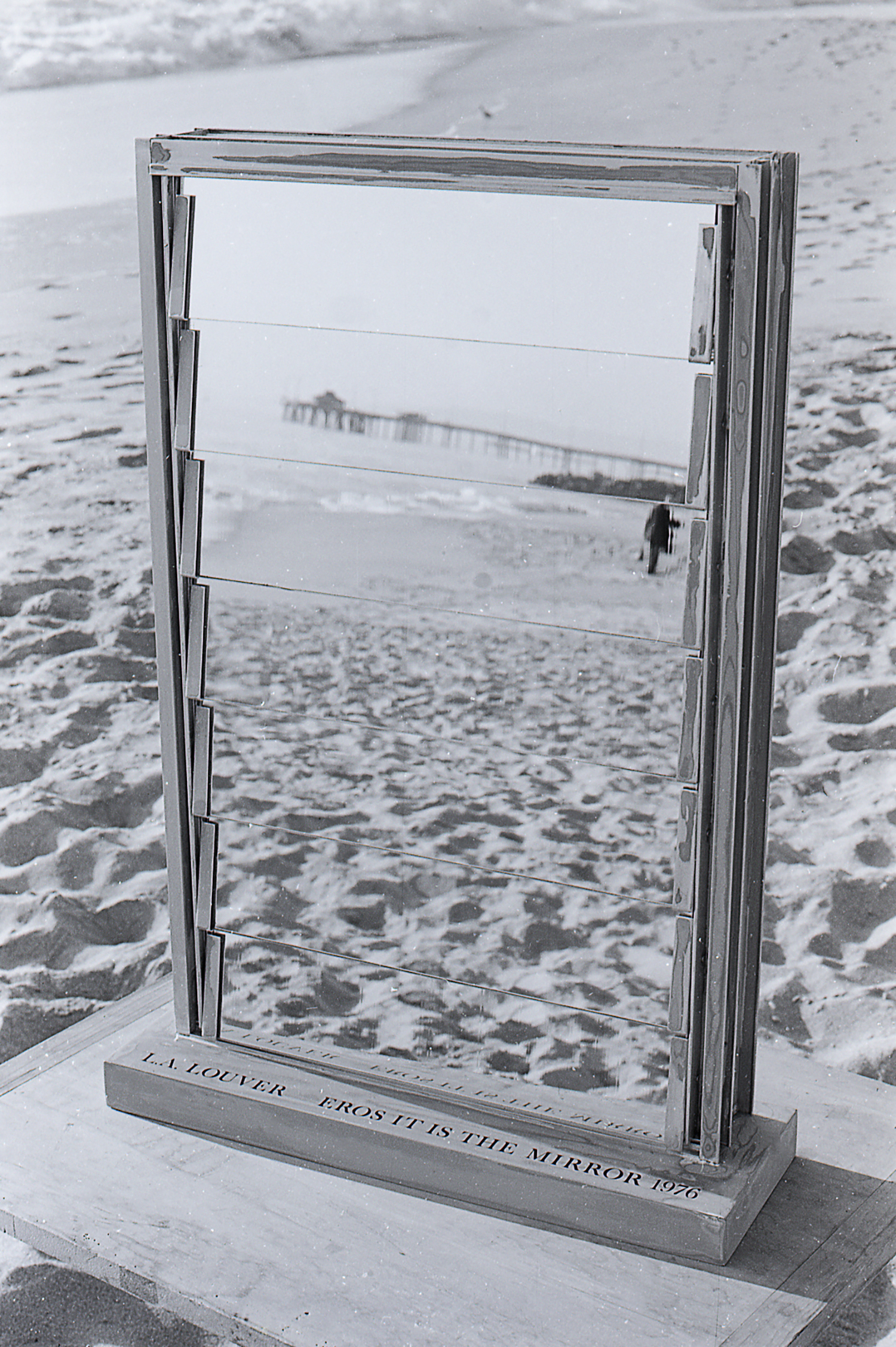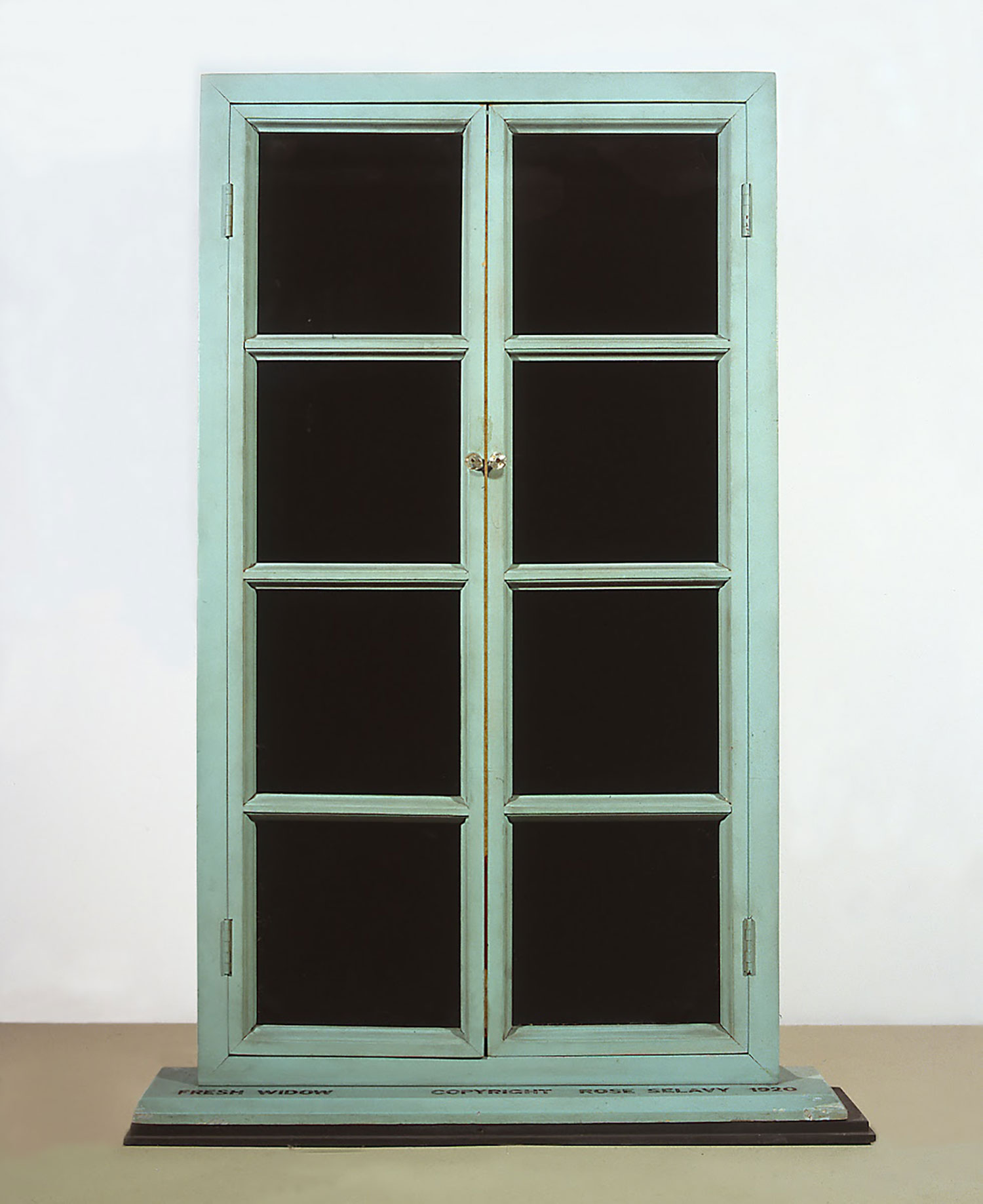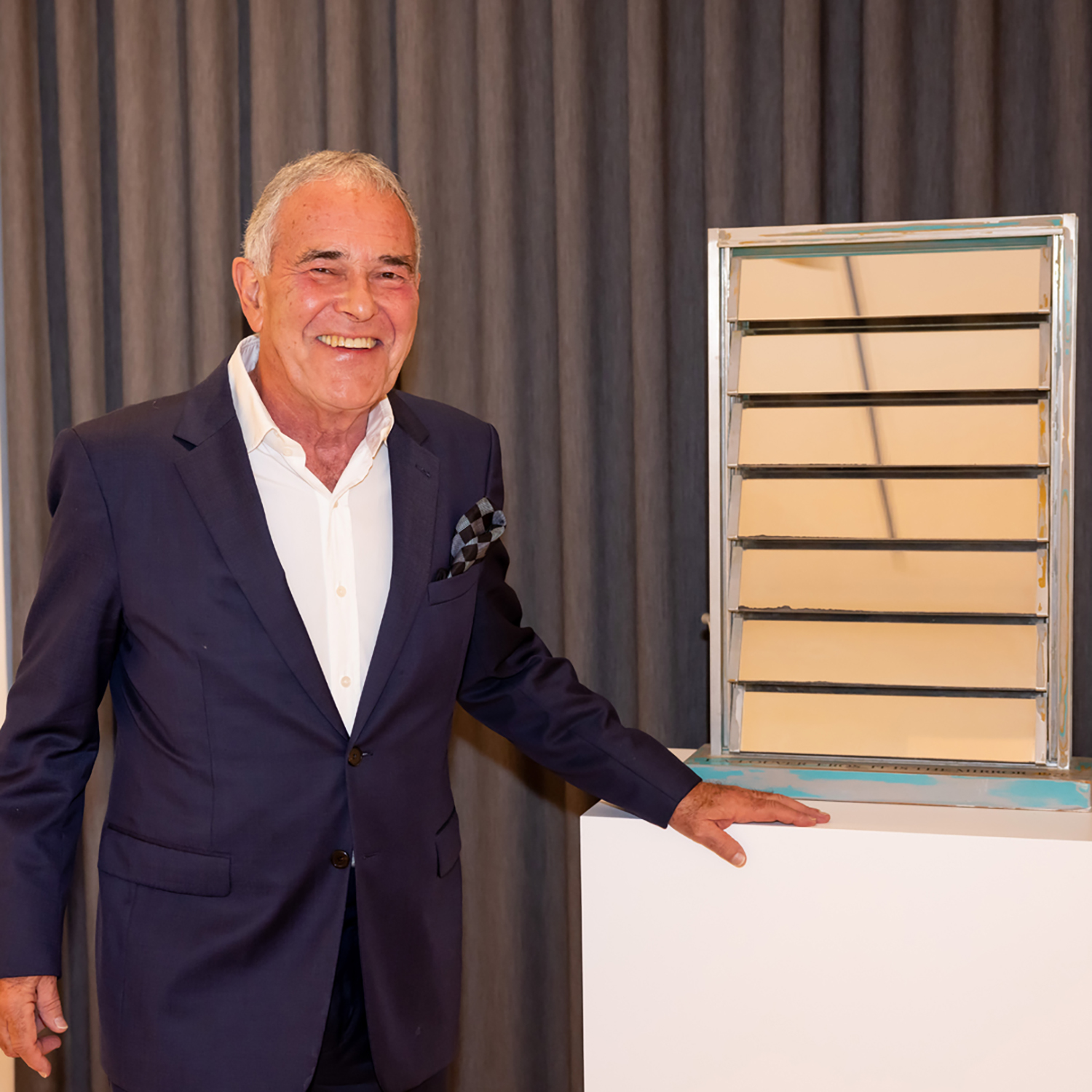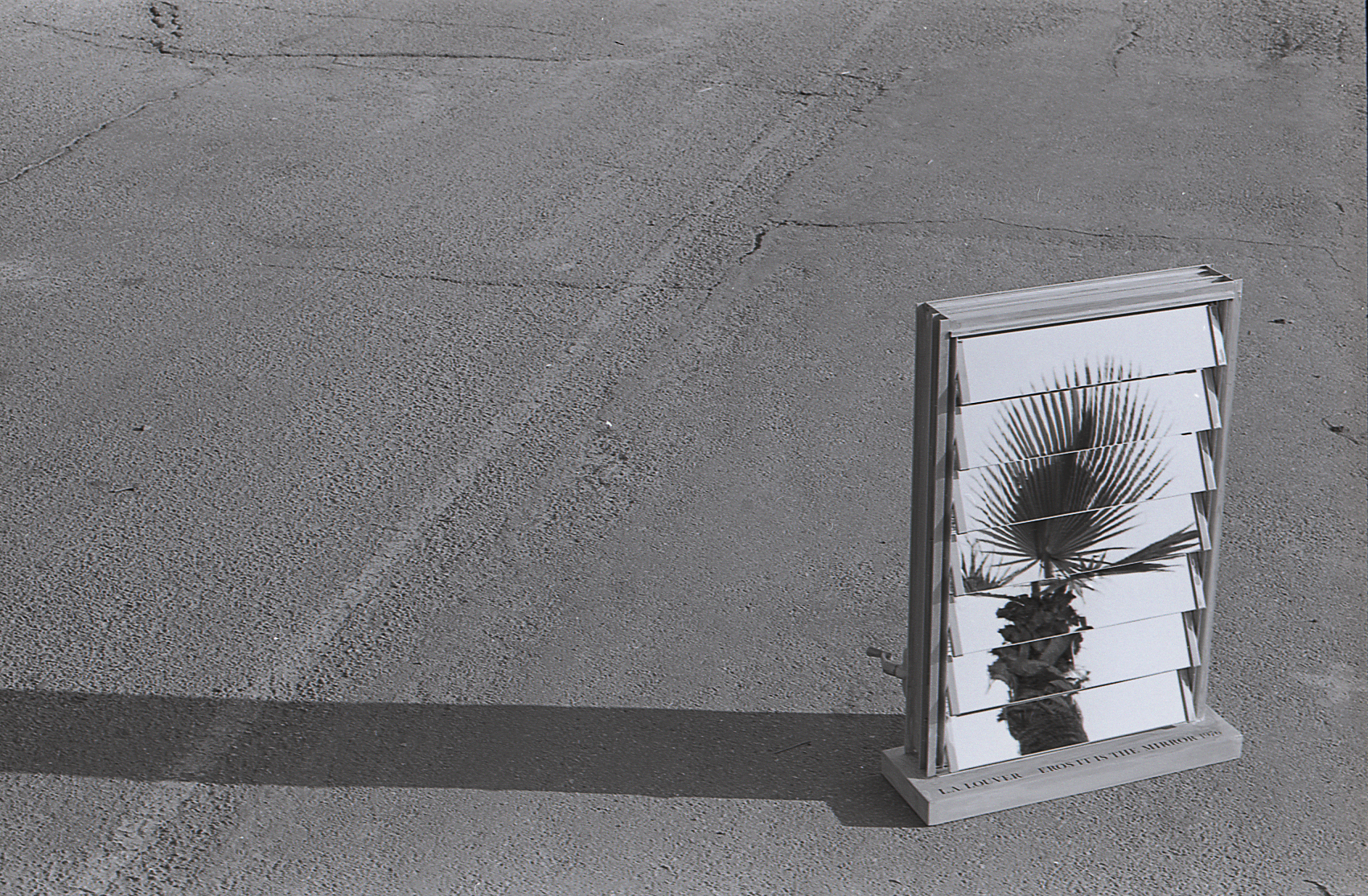
When L.A. Louver Founding Director Peter Goulds was a visiting lecturer at UCLA from 1972-74, the work of Marcel Duchamp featured significantly in his teaching. Goulds intended to make a series of short films on 20th-century artists with structuralism as the unifying concept. Consequently, Goulds created a number of objects as props to be used within the framework of the films. The first film was intended to focus on Marcel Duchamp and his relationship to Francis Picabia. Instead, a prop from the film would give L.A. Louver its unique name.
In 1920, Marcel Duchamp commissioned a window maker to produce a miniature French window set on a baseboard, which Duchamp named Fresh Widow. The work was painted in turquoise and produced with panes of leather rather than glass. As such, the act of cleaning the window became one of polishing.
Coming from England, Goulds found the louvered windows of his Los Angeles apartment unfamiliar. Looking at the device that opens a louvered window, it resembled the coffee grinder in Duchamp’s major work The Bride Stripped Bare by Her Bachelors, Even (1915-23). As Surrealist poet and critic André Breton described in his article about the piece, Duchamp’s work invites us on a journey through the artistic looking glass.

Inspired by Fresh Widow and The Bride Stripped Bare... Goulds produced a miniature Los Angeles window following the same dimensions as Duchamp’s Fresh Widow. The turquoise structure of the L.A. window was sanded to roughen the surface and reveal the primer beneath. Inscribed on the baseboard of Duchamp’s Fresh Widow are the words “Fresh Widow, Copyright Rose Selavy 1920.” It was the first time Duchamp used his female pseudonym. For Goulds’s window, he writes “L.A. Louver, Eros It Is the Mirror, 1976.” Goulds refers to the French pronunciation of Rose – Eros – which gestures both to the center of the ego and the desire to create. The panes of the Los Angeles window are not made with leather or clear glass, but mirrors. As such, when the window is closed, you are mirrored in your own reflection. However, when you ratchet the coffee grinder feature, you journey through the Los Angeles looking glass.
When Goulds opened the gallery to the public in January of 1976, he searched for an appropriate pseudonym. Goulds’s wife and gallery co-founder Elizabeth Goulds commented, “Why don’t you call it L.A. Louver?”, after one of the many film props that were littering their apartment at that time. Goulds felt that was a good idea and the name has stayed with us for 50 years.
See the work that gave L.A. Louver its name—on view for two more days as part of L.A. Louver Celebrates 50 Years.


